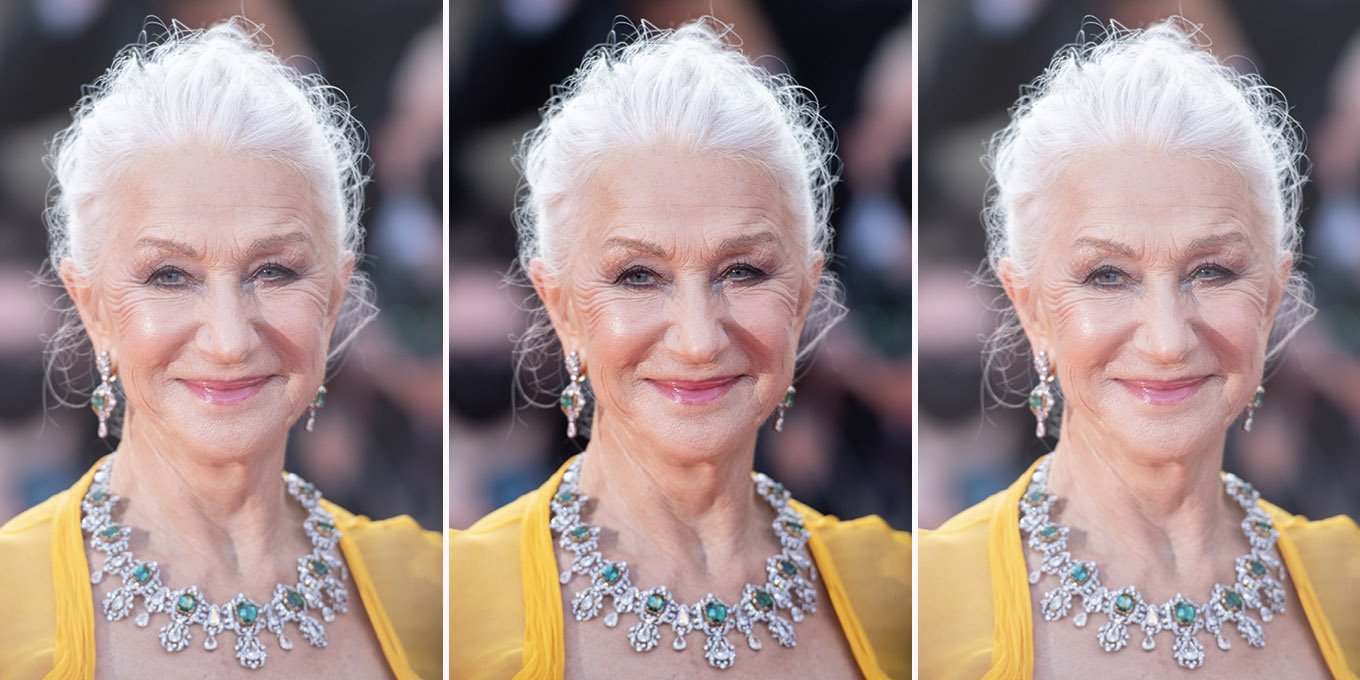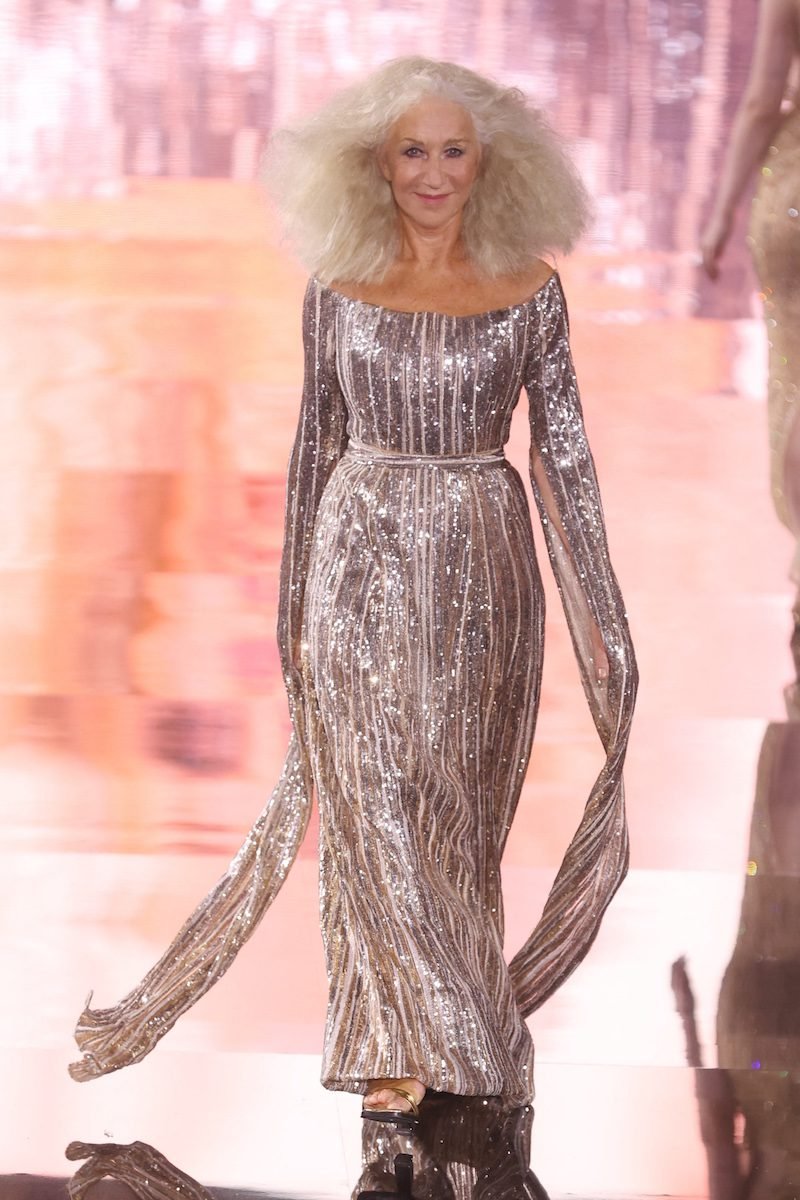I’m madly in love with Helen Mirren. it’s definitely not a lesbian thing; if it were, I’d be only too pleased to say so: my taste in females is fabulous, thank you very much. What I feel is more a woman-crush that unites us in a self-loving sisterhood of age, gender and body positivity.
At 78, Mirren is both an acting legend and role model for legions of admiring women like me. A former member of the Royal Shakespeare Company, she started her film career playing skin-baring vixens then moved into more significant—and more fully clothed—roles that included Queen Charlotte in The Madness of King George (1994) and both Elizabeths in the British TV mini-series Elizabeth I (2005) and the film The Queen (2006). All while never quite losing the habit of exposing—or these days, just outlining the still-enviable contours of—a body she once disliked for what she saw as its big-breasted short-leggedness.
I’m not exactly sure when I graduated into full-fledged fandom. My awareness of her began in adolescence with arthouse films like Caligula (1979), Excalibur (1981) and The Cook, the Thief, His Wife and Her Lover (1989). All showed Mirren involved in highly stylized, often feral nude/sex scenes that I watched with breathless fascination and not a little fear. As I moved through the vagaries of adult life that ended my innocence (and sometimes my faith in justice), Mirren evolved as well, stepping away the sex object she’d been and toward the mission-driven woman she really was She took to television to play a female detective chief inspector combating crime and police force misogyny in Prime Suspect (1991-2006); then did voice-overs for movies and animated features while pursuing unlikely roles in action films like F9: The Fast Saga (2021) and superhero sagas like Shazam! Fury of the Gods (2023).
What I do know is that just before I turned 50, Helen Mirren suddenly mattered. Unlike most female actors who, coming up against film industry sexism, tend to fade away after 40 or 50, she endured, taking on projects that seemed to go against the grain of who she was and succeeding. Self-reinvention clearly didn’t faze her; if anything it only added to her appeal, especially to ordinary midlife women like me facing similar challenges related to social and/or professional erasure. Because of our age, because of our experience, because of our changing bodies. Unwilling to be dismissed for her age or typecast as a stage actor, sexpot, film icon or anything else for that matter, she pushed—and crossed—boundaries instead. And in the process made herself a kind of moving target that refused to be held down or contained.
Best of all she looked good doing it. In 2008 a now-notorious paparazzi photograph of her in a red bikini began circulating in the media and online. The image showed a fit and trim sexagenarian woman who went on to win the 2011 Body of the Year award for women (then 36-year-old soccer star David Beckham took the honors for men). I was so impressed with the photo that I told a 50-something male friend about it.Without a shred of irony, he later admitted the picture had officially turned Helen Mirren into the GILF of his dreams and put her at the top of his fantasy date hit list.
More than a decade later, Helen Mirren is still challenging outdated ideas about women and aging. In a fall 2023 fashion runway appearance in Paris for L’Oréal, a white-haired, supremely self-confident Mirren toured the catwalk with women more than 50 years younger than she was. Glowing with the “swagger” that informs her views on beauty and life. It’s not about physical perfection or fitting into narrowly defined ideals of how women should look. It’s about how to move in the world with grace and self-appreciation.
That’s the lesson I love best from the many Helen Mirren has offered. Age isn’t some terrifying thing. Rather, it—or rather, the self-knowledge and calm it brings—is the prize gained from having survived the disorienting. world-shaking ups and downs of life. Young people believe in control, that everything progresses—or should progress—in a straight line and balk at every twist and turn. Older people know better. Control (of systems in which you live or the body into which you are born) is an illusion. The only power we have is the power to accept the things we cannot change—like my graying hair and the crow’s feet that grow deeper with every year that passes—and own who we are.
There’s a two-minute video on YouTube called “Lessons in Worth” encapsulates everything the actress stands for. Her face beautifully lined beneath impeccable but not overdone make-up, Mirren speaks on behalf of L’Oréal, a company that has used the phrase “because I’m worth it” to influence women to buy their products for fifty years. She is of the system that manipulates women and from which she has also benefited. Yet she also manages to stand outside it through the authenticity that underlies the spokeswoman-persona she adopts.
Blue eyes blazing, she remembers the rage she felt in her youth at learning that women who believed they had value beyond youth or sexuality were “mad or bad or sad or all of those things put together.” She is too poised to elaborate on the particular challenges she has faced so she lets the authenticity speak for her. Buy L’Oreal if you like, she seems to say in the silent undercurrent that connects her to the viewer. But even if you don’t you’re still worth it no matter who you are and no matter the choices you make.

